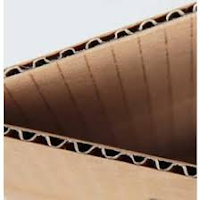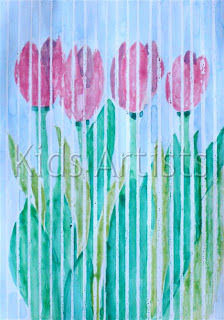You need:
- drawing paper A3 size
- tempera paint in green, blue, white, red and yellow
- two brushes per student
- two spunges per student
- paper towels
- oil pastel crayons
- schotels
Claude Monet (1840-1926) is considered one of the most important painters of Impressionism.
Typical for Impressionists:
- they choose subjects from ordinary life
- special attention for light and color
- work in the open air
- smooth brushstrokes
- dashes resemble a sketch
- it's about the impression!
Discuss the term impressionism. Show some paintings by Monet and zoom in on a work with water lilies in Arts & Culture. Do students see the characteristics of impressionism in this artwork?
Monet had a large garden with a pond and a Japanese bridge in Giverny France. He liked to paint in that garden. His works of water lilies are therefore famous and are the basis of this lesson.
Lesson 1
Squeeze some blue, green and white paint onto a saucer. Dipt your sponge into the blue paint. Stamp on the sheet. Do the same with green paint and stamp all over the sheet. Finally do this with white paint. You can use the green side of your sponge, to get a light green color also. Let the work dry.
Lesson 2
To paint the water lilies: mix a little bit of red with white paint. Paint ovals spread across the sheet. Not too neat, it's all about impression!
Paint a green border at the bottom of the ovals: the leaf. To make it fresher, you can mix some light green paint and use it. You don't have to clean the green brush first.
Then paint a heart in your flower with yellow. Let the work dry.
Finally draw lines in your lily with a dark red or purple oil pastel: the petals.
Artworks made by students of grade 1 and 2.












.jpg)
.jpg)




.jpg)




.jpg)










.jpg)
.jpg)
.jpg)
.jpg)
.jpg)
.jpg)
.jpg)
.jpg)
.jpg)
.jpg)
.jpg)
.jpg)
